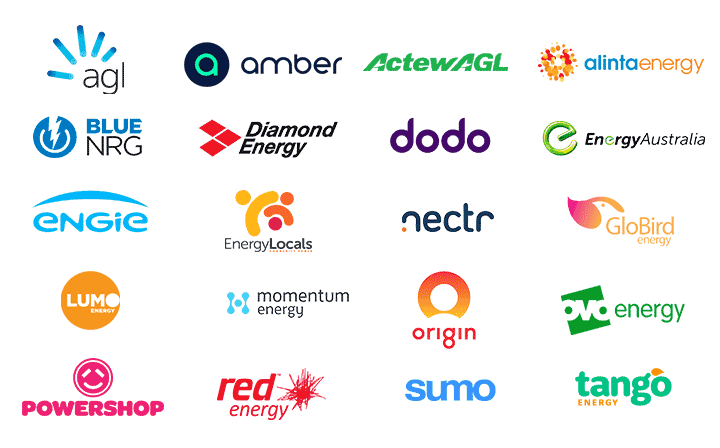I’ve been entering electricity plans from all retailers in Australia for our comparison service for over five years. As a result, I review the best possible deals in the market every day. There have been lots of changes in the market during this time. Plans have appeared, evolved or become extinct. So, I’ve changed the style of plan our household uses. I’ll break down the offers we’ve selected over the last five years and why I choose them. In many ways, it might be a path that other motivated households take to minimise their energy costs.
Choosing the right plans has assisted us in getting a fast payback on investments in solar and battery. For example, our best month ever was in 2020, when we received a credit of $698 for just 35 days. Unsurprisingly, the rates for that plan have changed, and it’s impossible to achieve that return anymore (at least not without a lot more storage but that’s another story)
Energy plans don’t stand still.
We all hope that if we keep buying the same thing, we’ll get the same value. But what happens when the value you receive declines? With fast-rising energy prices and ongoing fall in solar feed-in tariffs, the energy market for most Aussie households is getting worse.
I’ll stress upfront that different households will fare better on plans suited to their needs – there is no one-size-fits-all solution. As I moved plans and retailers, it was because the deal’s value declined. Over time, new opportunities arose. There are still significant savings on offer. However, making the most significant savings requires more effort and investment.
What I’ve discovered in 2022 is the plans closely linked to market prices now present the best opportunity for motivated and flexible households. You can read more here about the three levels of energy plan and the potential to save.
My journey
Let’s go back in time and share the journey of the energy plans we used at our home in Sydney …
AGL Solar Savers – 2018 to 2020
Ah, the heady days of 20-cent feed-in tariffs with AGL Solar Savers. No doubt, customers like myself caused AGL to lose money on this plan. Equally, I acknowledge AGL’s support for solar owners and their generosity. Origin Energy often matched AGL. Origin’s Solar Boost and AGL’s Solar Savers helped hundreds of thousands of solar owners pay back their solar PV quickly.
Discover Energy’s VPP Premium – 2020 to 2021
Discover Energy offered an extremely generous 25c per kWh feed-in tariff (FIT) for all exports in 2020. We were on a Time Of Use tariff with Off-Peak rates under 15c per kWh. So, the oversized FIT meant we could arbitrage buying cheap off-peak to pre-charge the battery daily. Then we’d take advantage by maximising solar exports throughout the day (and at night through their VPP).
Having been on Discover Energy’s VPP Premium, I’d sampled the benefits of being exposed to occasional peak market rates using their energy trading service. And I experienced how profitable a large battery setup could be. PV size constraints that Discover Energy implemented in 2021 took the shine off. More importantly, I wanted to earn that income more sustainably. My Ausgrid tariff meant buying off-peak power between 10pm-7am which in NSW is 80+% coal-powered. No point in making money if it involves creating more emissions. Instead, I wanted to access cheap energy from the grid when renewables were abundant, driving down the price.
Amber – 2022 onwards
We changed our households energy retailer to Amber in late 2021. Amber provides a market-linked pricing model where rates change over the day reflecting the wholesale market. Many said a large solar PV system wouldn’t work out with Amber because low daytime wholesale pricing means small FITs. However, if anyone could make it work, we could. And more to the point, by importing and exporting to the grid at the right times each day, we would cut emissions and support renewables. We planned to buy cheap daytime energy from the grid, increasing demand when renewables are plentiful (and often curtailed). Then to sell our solar from the battery in the evening, pushing down peak demand from fossil fuels.
In addition, I was searching for a more symbiotic relationship with my retailer. For AGL and Discover Energy, I was a loss-making customer. Their pricing teams had yet to factor in their feed-in tariffs for customers like me – so they continued to pay credit after credit. These plans were unsustainable and ultimately got cut back. Instead, I wanted to be able to maximise my income without the retailer losing any money at all. I wanted to align my objectives of supporting renewables with a like-minded retailer that also wanted to support more renewables in the grid. Read more here about our households experience on market-linked plans along with results.
""Our average market-linked feed-in tariff with Amber for 9 months was a whopping 34c per kWh." Nov'21 - July'22"
Amber customers can access their advanced technology platform (or third party providers like ned or Charge HQ) to help automate buying and selling electricity across the day. We can import cheap wholesale power to charge our EVs, heat or cool our home, heat hot water and charge our batteries at the most inexpensive and/or greenest hours of the day/week. And those solutions allow us to pay for all that consumption by exporting from our battery into the grid when wholesale rates and network demand is highest. The outcome is seriously high feed-in tariffs bringing stored predominantly renewable-sourced energy back into the grid in the evening when fossil fuels are spiking prices.
When I consider the result, it’s working out far better than I could have imagined with our current retailer, Amber. It’s certainly not a retailer for everyone; and a having a battery is essential to continued success both financially and in reducing emissions with Amber.



